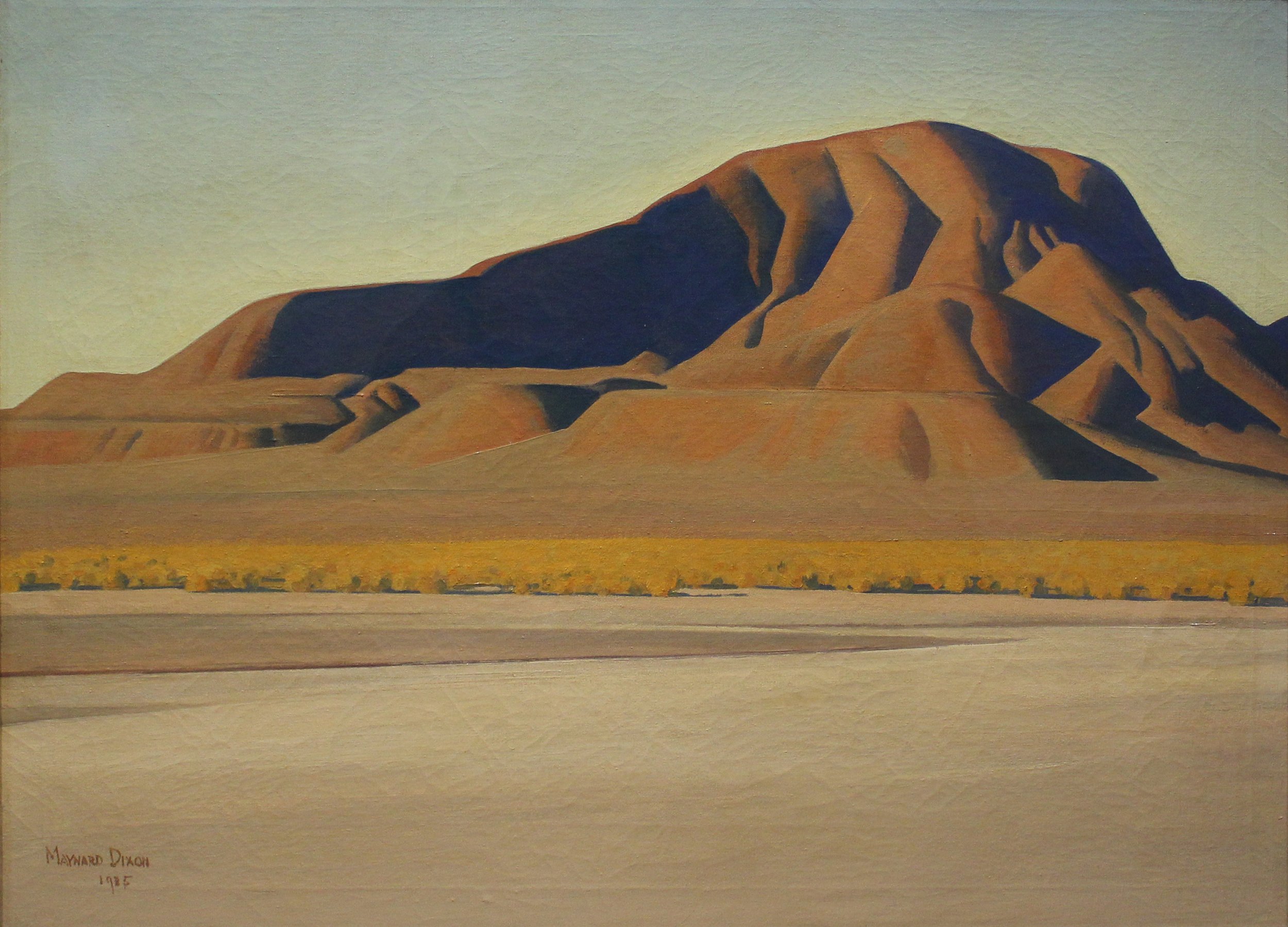Sagebrush and Solitude: Maynard Dixon in Nevada
By Ann M. Wolfe
My colleague Pamela Chadwick and I were approaching Middlegate, headed east on Highway 50 to visit an artist in eastern Nevada. For at least a few years at this point, we had been immersed in research for the exhibition that would become Sagebrush and Solitude: Maynard Dixon in Nevada. Suddenly, Pam yelled, “Stop!” There it was, just north of the highway: Fairview Peak. The mountain was immediately recognizable as the one in Dixon’s 1935 painting, Elements of Nevada. Although Dixon left no documentation confirming the location, the visual evidence was undeniable.
From left to right: Photo courtesy of Nevada Museum of Art, Fairview Peak near Middlegate, Nevada; Artwork by Maynard Dixon, Elements of Nevada, 1936, Oil on canvas, 30 x 40 inches. Private Collection.
Artwork by Maynard Dixon, The Shores of Lahontan, 1935, Oil on canvas, 29 1/2 x 39 3/8 inches, Collection Monterey Museum of Art. Gift of Renald L. Kocher and June Kocher Carter. 1995.022.
From 1901 to 1939, Dixon made several trips from his San Francisco home to paint, sketch, and write poetry about the striking landscapes of the Great Basin. From Dixon’s first Nevada sketching trip on horseback with artist Edward Borein in 1901, to his four-month trip to Humboldt County with Winnemucca resident Frank Tobin in 1927, Dixon captured the beauty of Nevada’s open spaces. Elements of Nevada was painted in 1935, as Dixon waited out his Nevada divorce from photographer Dorothea Lange. Shaken to his core by the loss of his marriage and family, Dixon wandered the desert alone in search of scenery to heal his soul. What he observed, and then translated to canvas, were solitary cottonwood trees, the stark and empty playa of Lake Lahontan, and other lonely and desolate mountain vistas.
Now more than 160 of Dixon’s paintings, drawings, and poems are assembled in a milestone exhibition on display at the Nevada Museum of Art. Sagebrush and Solitude: Maynard Dixon in Nevada, on display through July 28, 2024, traces the artist’s time spent in Nevada. It is a once-in-a-lifetime opportunity to spend extended time with an artist that many have described as the most important landscape painter of the American West.
Artwork by Maynard Dixon, Wild Horse Country [Humboldt County, Nevada], 1927 Collection of the Society of California Pioneers.
Dixon first visited the state of Nevada nearly 125 years ago, and while so much has changed during the past century, one can still explore many of the same remote locales depicted in these paintings, or drive across the state beneath what many like to refer to as a cloud-filled “Maynard Dixon sky.”
Ann M. Wolfe holds the endowed position of Andrea and John C. Deane Family Chief Curator and Associate Director at the Nevada Museum of Art, where she has worked since 2006. She is an art historian, scholar, and writer on topics specializing in Nevada art history, photography, Indigenous art of the Great Basin, and placing Nevada art, history, and culture into a broader global context.
To learn more, visit nevadaart.org, or contact the Nevada Museum of Art at 775.329.3333. Be sure follow the Nevada Museum of Art on Instagram or Facebook @nevadaart.



